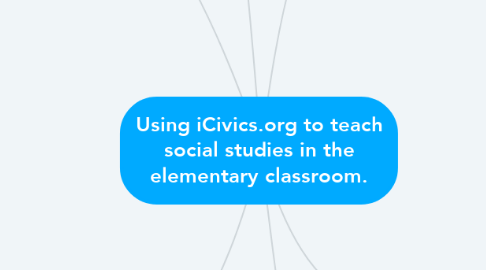
1. The learning goal connects the teachers role to the successful completion of the task. As the teacher discusses the process and purpose of the US Supreme Court, students are able to analyze how each case came to a resolution.
2. The learning assessment relates to the learning activity in that it requires students to demonstrate both their understanding of the judicial process and their critical thinking skills as they choose which piece of evidence best supports their argument.
3. The activity clearly relates to the goal. In the game students must take into consideration all factors when making the law, just as state congressional representatives do.
4. The role of the teacher is crucial. In order for students to effectively master the concept, the teacher must clearly explain the process of congressional deliberation and model how to apply this process (like in the game).
5. Law Craft
5.1. Learning Goal: Explain and give examples of how laws are made and changed within the state (MO SS, Grade 3, Standard 1.B).
5.1.1. Learning Activity: Students will craft a law for Congressional approval taking into account the values of their constituents, the bipartisan approaches they must take, and the value the law will have to the community it targets.
5.1.1.1. Teacher Roles: The educator will explain the process of making laws and provide examples of congressional deliberation.
5.1.1.1.1. Learning Assessment: When students are able to successfully craft an approved law, they have achieved the learning goal of the game.
6. Argument Wars
6.1. Learning Goal: Analyze peaceful resolutions and disputes by courts or other legitimate authorities in US history from 1800 to 2000 (MO SS Grade 5, Standard 2.B)
6.1.1. Learning Activity: Students will create arguments centered around historical Supreme Court cases and choose which evidence best supports the argument.
6.1.1.1. Teacher Roles: The educator will explain the purpose of the US Supreme Court, provide examples of controversial cases, and demonstrate the process of supporting an argument effectively.
6.1.1.1.1. Learning Assessment: When students are able to gain a successful verdict, they have achieved the learning goal of the game.
7. Executive Command
7.1. Learning Goal: Identify and explain the functions of the three branches of government in the federal government. (MO SS Grade 4, Standard 2.D)
7.1.1. Learning Activity: Students will act as the President of the United States. They will answer messages in their mailbox to engage in foreign affairs and pass or veto bills. If they pass a bill they go to the respective department to delegate tasks.
7.1.1.1. Teacher Role: The teacher will explain the different departments the president oversees and their roles. He/she will also describe what makes a bill good to pass and how this effects approval ratings of the president.
7.1.1.1.1. Learning Assessment: When the student has passed the appropriate bills, delegated them to the correct departments, and their approval rating is significantly high, they have passed the assessment.
8. The teacher role and the learning goal are connected because the students are learning the functions of the executive branch through the explanation of the teacher.
9. The learning activity and the teacher role are connected because without the knowledge provided by the teacher, the students would not have enough background knowledge to navigate the activity successfully.
10. We the Jury
10.1. Learning Goal: Explain a citizen's legal obligations, as well as opportunities for, engaging with and using local, state, and federal governments to shape decision-making.
10.1.1. Learning Activity: Students will take the role as a juror in a case. They will make decisions on the guilt of the defendant based on the evidence provided. The student will have to reach agreements with the other jurors.
10.1.1.1. Teacher Role: The educator will explain the purpose of a jury and how one is selected. The teacher will also discuss the purpose of "a jury of your own peers".
10.1.1.1.1. Learning Assessment: When students can successfully reach an agreement with all of the jurors and be able to explain the role of the jury, they will have passed the assessment.
11. Branches of Power
11.1. Learning Goal: Identify and explain the functions of the three branches of government in the federal government. (MO SS Grade 4, Standard 2.D)
11.1.1. Learning Activity: Students will act as the legislative, executive, and judicial branches to help an idea become a bill, pass the bill as law, and rule if the law is constitutional.
11.1.1.1. Teacher Role: The teacher will describe the process of the how a bill is proposed and becomes a law. He/she will highlight the different roles each branch plays in the steps and how beliefs and community members effect this process.
11.1.1.1.1. Learning Assessment: When students can successfully turn an idea into a proposed bill, to a law, and then have the law ruled constitutional, they will have passed the assessment.
12. Immigration Nation
12.1. Learning Goal: Describe the impact of migration on immigrants and the United States (1800-2000) (MO SS Grade 5, Standard 3a. A)
12.1.1. Learning Activity: Students will take the role of guiding along new immigrants coming into America to getting their citizenship.
12.1.1.1. Teacher Role: The teacher will explain the process of immigration and how it has progressed over the years. They will explain the impact that migration has on immigrations and on the United States (throughout many years of history).
12.1.1.1.1. Assessment: When students can successfully guide immigrants through the immigration process and be able to share what impact migration can have on immigrants and the United States, they will have successfully passed the assessment.

